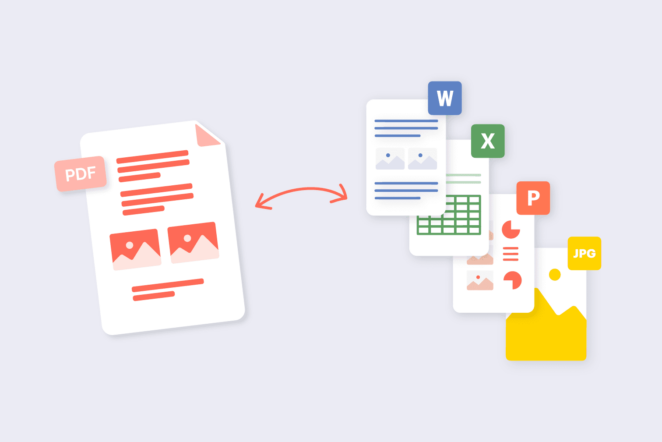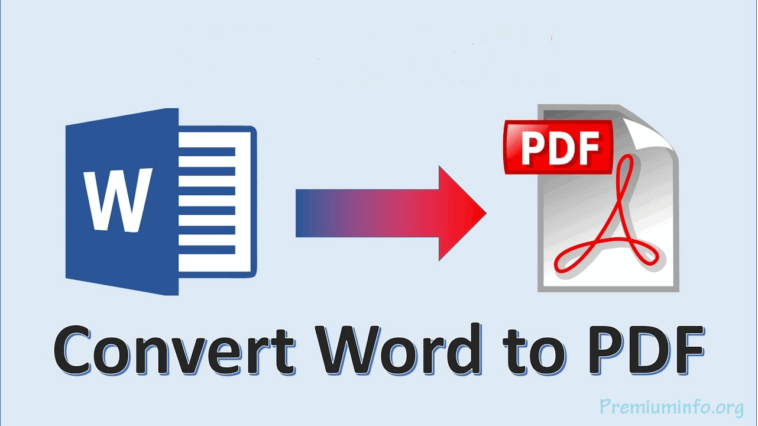As an undergraduate student, submitting polished and professional assignments is crucial for academic success. A well-structured and formatted assignment not only showcases your ideas and arguments but also presents you as a professional and dedicated student. One of the most effective ways to achieve this is by converting your Word document to PDF format before submitting it. In this article, we will delve deeper into the benefits of converting your assignments to PDF and how it can help you excel in your studies.
Retain Formatting

One of the most significant benefits of converting your assignments from Word to PDF format is that it helps to retain the formatting of your document. When you create a Word document, the formatting can sometimes change or become distorted when viewed on a different computer or operating system. This can be frustrating, especially if you’ve spent a lot of time perfecting the layout of your document.
PDFs, on the other hand, are designed to preserve the formatting of your document, regardless of the computer or device being used to view it. This means that your document will look exactly as you intended it to look, and your readers won’t have to struggle with formatting issues or distorted text.
For example, if you’ve used specific fonts or formatting styles in your document, they will be preserved in the PDF format. This is particularly important if you’re submitting assignments that require specific formatting guidelines, such as essays, research papers, or lab reports. By converting your assignments to PDF, you can ensure that your work looks polished, professional, and meets all the necessary formatting guidelines.
Moreover, retaining the formatting of your document is important if you’re including images, charts, or diagrams in your assignment. These visual aids can be crucial in sharing your ideas and arguments effectively. However, when you submit a Word document, the formatting of these images can sometimes change, and they may appear distorted or pixelated. By converting your document to PDF format, you can ensure that your images and charts look clear, crisp, and professional.
Increased Security

One advantage of converting Word to PDF format is that it offers enhanced security for your tasks. When you hand over a Word file, there’s always a chance that someone could make changes or alter it without your permission. This can be particularly worrying if you’re working with sensitive or private information, like personal data or research findings.
On the other hand, PDFs are designed to provide better security than Word files. Once you’ve converted your document to PDF format, it becomes a read-only file, which means that it can’t be easily edited or manipulated. PDFs use encryption technology to safeguard your document from unofficial access, so you can feel more confident that your work is protected.
Furthermore, PDFs can be password-protected, which adds another layer of security to your assignments. This means that only authorized users with the correct password can open your document, keeping your work safe and secure.
In addition, PDFs also include a feature called “digital signatures,” which can be used to confirm the authenticity of your document. This can be particularly useful if you need to provide evidence of the originality of your work, such as in the case of research papers or academic articles.
Compatibility
Converting your tasks from Word to PDF format ensures many benefits, including increased compatibility with various devices and operating systems. When you send a Word file, there’s always a chance that the person who receives it won’t be able to open it correctly, especially if they’re using a different software or operating system.
But, PDFs are designed to be highly compatible with different devices and software, meaning that your instructor or professor can open and view your document without any issues. Whether they’re using a Windows PC, a Mac, or a mobile device, your PDF will look the same on every device, thanks to consistent formatting.
This compatibility is useful if you’re submitting assignments that require specific formatting guidelines, such as research papers, lab reports, or essays. By converting your work to PDF format, you can be sure that your file looks polished and professional, no matter who is viewing it.
In addition, PDFs are printer-friendly, which means that you can easily print a hard copy of your assignment if needed. This can be useful if your instructor requires a hard copy, or if you want to keep a physical copy of your work for your records.
Easy to Share

Another advantage of converting your tasks from Word to PDF is that it makes it easy to share your work with others, whether it’s your instructor, classmates, or research collaborators.
PDFs are designed to be shared by email, file sharing platforms, or through a website. This makes it suitable to send tasks, especially in a digital environment. By converting your tasks to PDF format, you can ensure that everyone who needs to view your work can access it easily and without any problems.
Additionally, PDFs are suitable, which means that they can be viewed on almost any device or operating system. This is useful if you need to share your work with ones who are using different types of software or devices. By using PDF format, you can avoid potential compatibility problems that can happen when sharing Word files.
Moreover, PDFs ensure enhanced security features that can help protect your work from unofficial access. PDFs can be protected by password, ensuring that only official ones can access the file. This can be particularly useful if you need to share confidential or sensitive information.
Accessibility
Another benefit of converting your tasks from Word to PDF format is that it can enhance the accessibility of your work. This is important if you’re sending assignments that need to be universally accessible to readers with disabilities or who require assistive technology to access your work.
PDFs has accessibility features that allow users to edit the text size, font, and color contrast. This can be useful for readers with sight problems, who may need larger text or high contrast to read effectively. In addition, PDFs can be converted into text-to-speech formats, allowing readers with reading disabilities to listen to the file instead of reading it.
By converting your tasks to PDF format, you can ensure that all readers, including those with disabilities, can access and understand your work. Additionally, PDFs are designed to ensure enhanced readability, making them easier to read and follow than Word files. This is because PDFs’ layout remains the same regardless of the device or software used to view the file.
Furthermore, PDFs can be shared with others easily, whether it’s your instructor, classmates, or research group. This is useful if you need to share your work with multiple people or across different platforms.
Overall, by converting your assignments to PDF format, you can ensure that your work looks professional, is compatible, and accessible to many readers, while also being secure and protected from unofficial access or tampering. By taking advantage of the benefits that PDFs offer, you can enhance your academic success and achieve your academic goals with ease.



